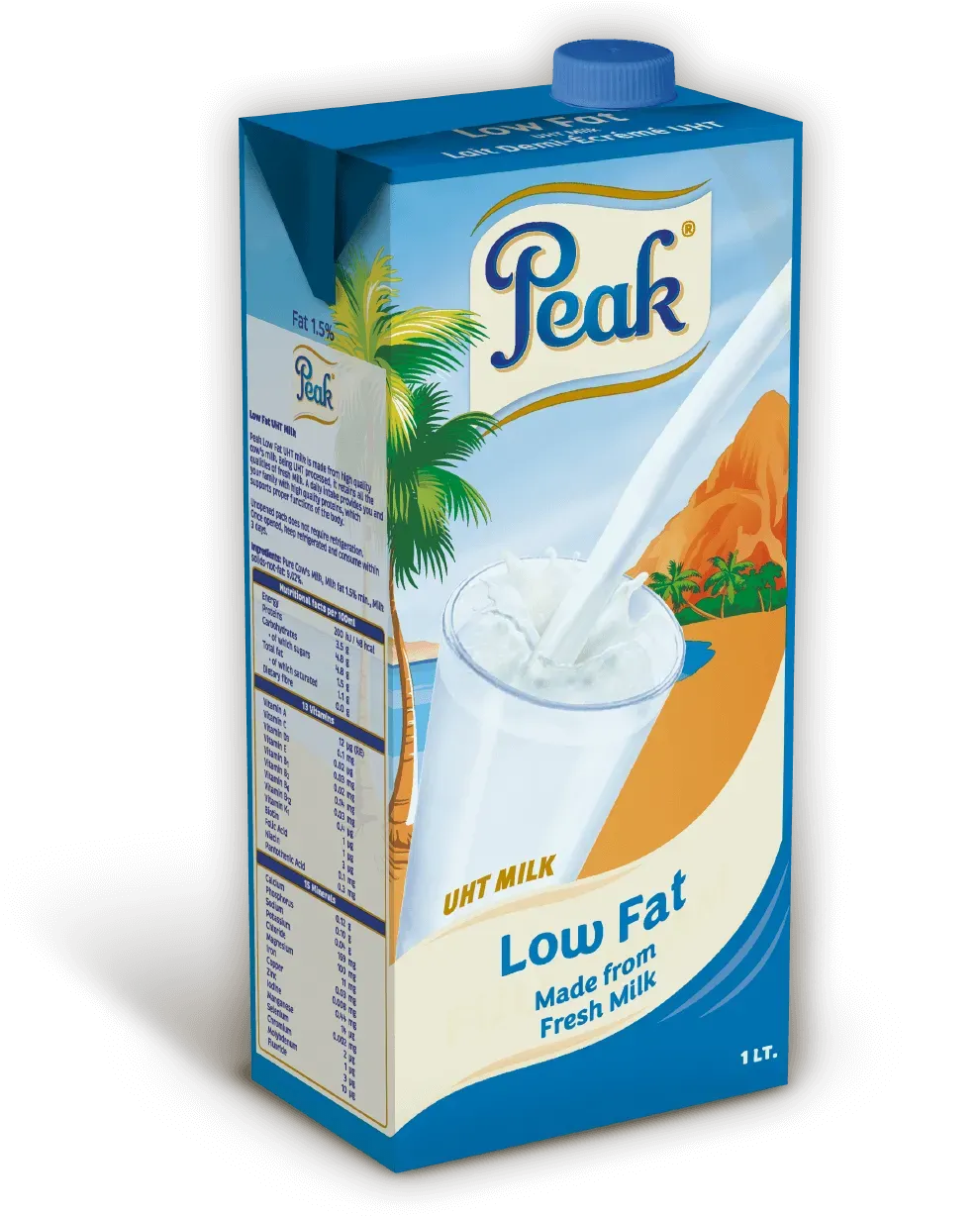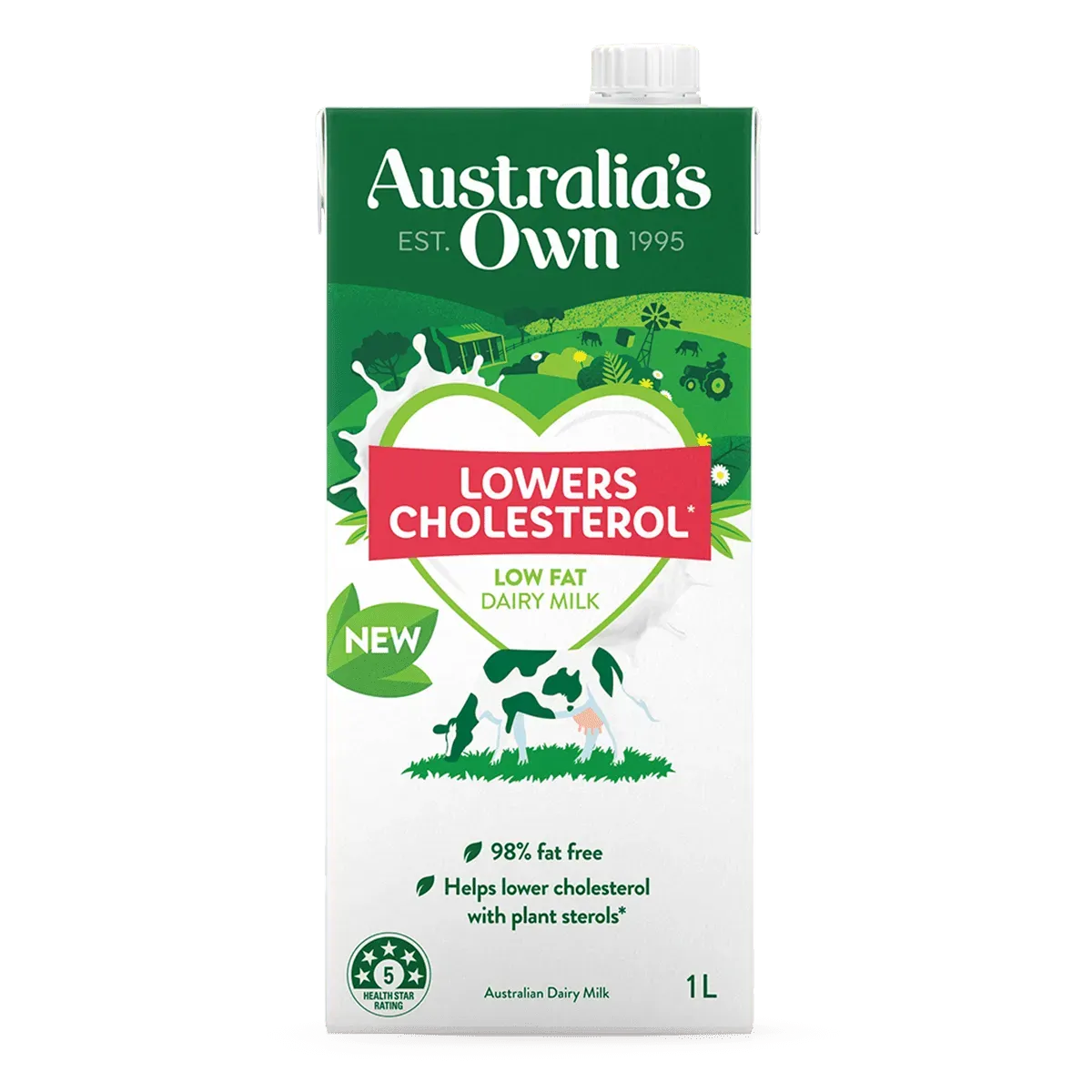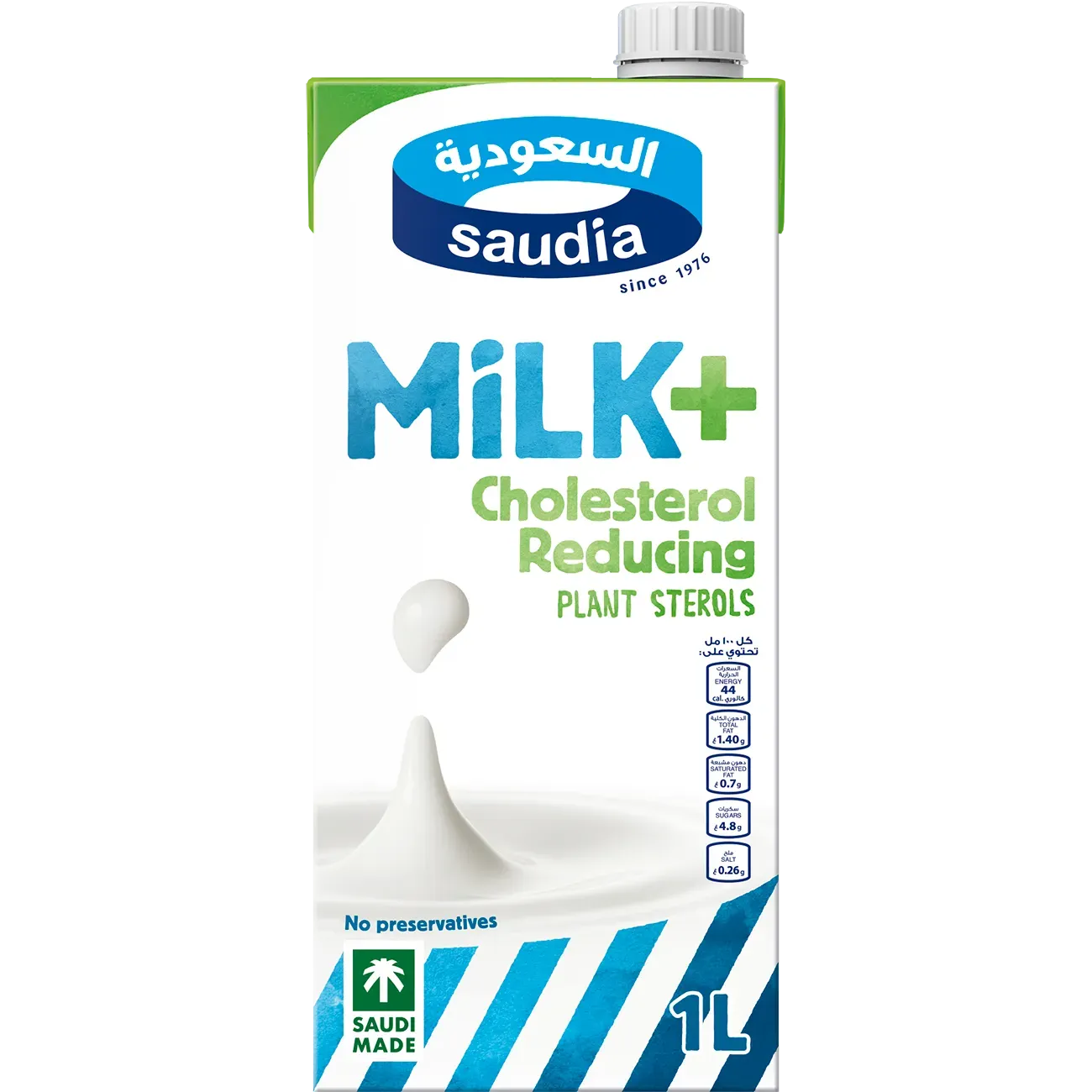Table of Contents
Milk. It was simple once, right? Pour a glass, move on with your day. Then came the conversations about cholesterol, saturated fat, and what exactly that morning latte was doing to your arteries. For anyone trying to keep their heart in good working order, navigating the dairy aisle – and increasingly, the non-dairy one – feels less like grocery shopping and more like a nutritional minefield. Whole milk packs a punch of saturated fat, the stuff linked pretty directly to rising LDL, the "bad" cholesterol. So, if you're aiming to manage those numbers, the standard carton might be off the table. This is where the search for low fat low cholesterol milk begins, a quest that opens up a surprising number of options beyond just the skim stuff you might remember. This article will break down what's what: we'll look at the usual suspects in the dairy case, explore the booming world of plant-based alternatives, and help you figure out which carton offers the best balance for your health goals without requiring a chemistry degree to understand the label. Let's figure out how different milks actually impact your cholesterol levels and make some informed choices.
Understanding Cholesterol and Dairy Fat

Understanding Cholesterol and Dairy Fat
So, What's the Deal with Cholesterol Anyway?
Alright, let's cut through the noise. Cholesterol gets a bad rap, but your body actually needs it. It's a waxy substance, crucial for building cells, making vitamins like D, and producing hormones. Your liver makes most of the cholesterol you need. The trouble starts when you have too much circulating in your blood, specifically the LDL kind, often dubbed "bad" cholesterol. This stuff can build up in your arteries, narrowing them and making it harder for blood to flow. Think of it like gunk in a pipe. Not ideal for your heart or brain health, obviously.
Diet plays a role here, specifically saturated and trans fats. While dietary cholesterol itself doesn't impact blood cholesterol as much as previously thought for most people, saturated fat is a different story. It tells your liver to pump out more cholesterol, specifically that problematic LDL. So, when we talk about managing cholesterol through diet, we're often talking about cutting back on saturated fat, and dairy is a major source for many folks.
Dairy Fat: Not All Milk is Created Equal
Dairy products, particularly full-fat versions, contain saturated fat. This is the primary reason whole milk and some cheeses get flagged in cholesterol-conscious diets. A single glass of whole milk can pack a significant amount of saturated fat, contributing to that "gunk in the pipes" scenario we just discussed. This is why the conversation around low fat low cholesterol milk is even happening. The less fat, generally the less saturated fat, and theoretically, the less impact on your LDL levels.
However, the science isn't always black and white. Some studies have muddied the waters a bit, suggesting that the dairy matrix – how the nutrients are packaged together – might influence how saturated fat from dairy affects us compared to saturated fat from, say, a burger. Still, the general consensus from major health organizations points to reducing saturated fat intake as a key strategy for lowering high cholesterol.
Milk Type (8 oz) | Saturated Fat (g) | Cholesterol (mg) |
|---|---|---|
Whole Milk | 4.6 | 24 |
2% Reduced-Fat Milk | 2.9 | 12 |
1% Low-Fat Milk | 1.5 | 5 |
Skim (Non-Fat) Milk | 0.1 | 2 |
The Spectrum of Dairy's Impact
Looking at the numbers, you see a clear trend: as the fat content drops, so does the saturated fat and cholesterol. This is the fundamental logic behind recommending lower-fat dairy options if you're watching your cholesterol. Switching from whole milk to skim milk is one of the simplest dietary changes you can make to reduce saturated fat intake. It's not rocket science, just basic math on the nutrition label.
But what about other dairy products? Yogurt and cheese also contain saturated fat, and their impact depends heavily on their fat content. A block of full-fat cheddar will have a vastly different profile than fat-free Greek yogurt. Understanding the fat content across different dairy products is crucial when building a heart-healthy diet. Are you reading those labels closely?
Cow's Milk: From Whole to Low Fat Low Cholesterol Options

Cow's Milk: From Whole to Low Fat Low Cholesterol Options
The Journey from Udder to Skim
So, you've seen the chart. Whole milk is where the party starts, packing about 3.25% milkfat, which translates to a decent hit of saturated fat and cholesterol per glass. This is the milk straight from the cow, processed for safety but retaining most of its natural fat content. If you're actively trying to lower your cholesterol numbers, sipping on whole milk regularly is likely counterproductive. The good news? Dairy processors figured out a way to, well, un-fat the milk.
They spin it. Literally. Centrifugal force separates the cream (the fatty part) from the liquid milk. The more cream they remove, the lower the fat content becomes. This process gives us 2% (reduced-fat), 1% (low-fat), and finally, skim milk (non-fat), which has had virtually all the fat removed. This mechanical intervention is how you get closer to a truly low fat low cholesterol milk from a cow.
Finding Your Low-Fat Dairy Sweet Spot
Moving down the fat percentage ladder significantly reduces the saturated fat and cholesterol per serving. Skim milk, with almost no fat, contains negligible cholesterol and minimal saturated fat, making it the go-to recommendation for a low fat low cholesterol milk option if cow's milk is your preference. 1% milk is a solid compromise for some, offering a bit more body than skim but still drastically lower in fat than whole. 2% milk is somewhere in the middle – better than whole, but still containing a noticeable amount of saturated fat.
Taste is a factor, of course. Switching from rich whole milk to watery skim can be a shock. Many people transition gradually, moving from whole to 2%, then to 1%, and finally to skim. Most lower-fat cow's milk is also fortified with Vitamins A and D, which are naturally found in the fat of whole milk but are added back after processing.
Ready to ditch the whole milk? Consider these questions:
- Can you handle the thinner texture of skim or 1% milk?
- Would a gradual transition work better for your taste buds?
- Are you checking the labels for fortification to ensure you aren't missing out on vitamins?
Exploring PlantBased Low Cholesterol Milk Alternatives

Exploring PlantBased Low Cholesterol Milk Alternatives
Beyond the Cow: Why Plant Milks are on the Rise
so maybe cow's milk just isn't your jam, or perhaps you're actively trying to steer clear of saturated fat and cholesterol altogether. Good news: the grocery store aisles have exploded with alternatives that don't involve an udder. Plant-based milks have moved from niche health food stores to mainstream options, and for good reason. Most of them naturally contain zero cholesterol and significantly less saturated fat than whole cow's milk. This makes them automatic contenders in the search for low fat low cholesterol milk.
Think about it: almonds don't have cholesterol. Oats don't have cholesterol. Soybeans? Nope, no cholesterol there either. The saturated fat content varies depending on the base ingredient and how it's processed, but generally, you're starting from a much lower baseline compared to dairy. It's a different ballgame entirely, offering flexibility for folks with dietary restrictions or just those looking for diverse nutritional profiles.
Soy, Almond, and Oat: The Big Three Contenders
When you look at plant milks, a few stand out. Soy milk was one of the first widely available alternatives and remains popular. It offers a decent protein punch, often comparable to cow's milk, and some studies suggest it might even help nudge down LDL cholesterol slightly. Almond milk is known for being low in calories and fat, though it's also low in protein unless fortified. Its mild taste makes it versatile.
Oat milk has surged in popularity, especially for lattes (the baristas love it). It often has a creamy texture and contains beta-glucan, a type of soluble fiber that research indicates can help lower cholesterol. It's naturally gluten-free, though cross-contamination can be an issue if you have Celiac disease, so always check the label. These three cover a lot of bases in terms of taste, texture, and nutritional perks.
Plant Milk (8 oz) | Saturated Fat (g) | Cholesterol (mg) | Notes |
|---|---|---|---|
Soy Milk (Unsweetened) | 0.5 | 0 | Good protein source, may help LDL |
Almond Milk (Unsweetened) | 0 | 0 | Low calorie, often fortified |
Oat Milk (Unsweetened) | 0.5 | 0 | Contains beta-glucan, creamy texture |
Rice Milk (Unsweetened) | 0.2 | 0 | Often higher in carbs/sugar, low protein |
Coconut Milk Beverage (Carton) | 4.5 | 0 | Higher saturated fat than other plant milks |
Beyond the Usual Suspects: What Else is Out There?
The plant milk world doesn't stop at soy, almond, and oat. You'll find options made from rice, cashews, macadamia nuts, hemp seeds, and even peas. Rice milk is generally low in fat but can be higher in sugar and lower in protein than other options, making it less ideal for blood sugar control or satiety. Coconut milk *beverage* (the kind in the carton, not the canned stuff for cooking) is widely available but can be surprisingly high in saturated fat, similar to 2% or even whole cow's milk, despite having no cholesterol. So, while it's cholesterol-free, it might not fit neatly into a *low saturated fat* plan.
Hemp and pea milk are newer players, often offering more protein than almond or rice milk. Pea milk, in particular, is gaining traction as a higher-protein, lower-saturated fat option. The point is, if one plant milk doesn't work for you – maybe you don't like the taste, or you have an allergy – there are plenty of other non-dairy doors to knock on in your search for a tasty, low fat, low cholesterol milk alternative.
Making Smarter Choices: Finding Your Ideal Low Fat Low Cholesterol Milk

Making Smarter Choices: Finding Your Ideal Low Fat Low Cholesterol Milk
Navigating Labels: Beyond the Front of the Carton
Alright, you've walked past the glorious, full-fat options. Now you're staring at a wall of cartons claiming "low fat," "light," "heart healthy," and probably a few things that sound like they were invented in a lab. How do you actually pick a genuinely low fat low cholesterol milk from the marketing jargon? Flip it over. The nutrition facts panel is your best friend here. Don't just look at the calorie count. Head straight for "Total Fat" and, more importantly, "Saturated Fat." Aim for options with saturated fat numbers as close to zero as possible. For cow's milk, that means skim or 1%. For plant-based milks, most will already be low, but watch out for some coconut milk beverages which can sneak in saturated fat.
Also, glance at the cholesterol number. For plant milks, it should be zero. For cow's milk, the lower the fat percentage, the lower the cholesterol, but remember that dietary cholesterol isn't the main villain; saturated fat is. Sugars are another thing to eye warily. Many flavored or even "original" unsweetened plant milks contain added sugars to improve taste. Opt for "unsweetened" versions whenever possible to avoid unnecessary sugar spikes.
Taste, Texture, and Fortification: Finding Your Fit
Let's be real. Switching from whole milk to skim can feel like drinking cloudy water initially. The texture is different, the richness is gone. This is where personal preference kicks in. If you hate skim milk, you won't drink it consistently. Maybe 1% is a better starting point, or perhaps a creamier plant milk like oat milk is the way to go. The "ideal" low fat low cholesterol milk is the one you'll actually consume regularly as part of your diet.
Also, check for fortification. Cow's milk is typically fortified with Vitamin D and calcium, which are important nutrients. Plant milks aren't naturally high in these, so many brands add them in. Ensure your chosen alternative provides these key vitamins and minerals, especially if you rely on milk for these nutrients. Don't sacrifice essential vitamins just to cut fat; find a balance that works for your overall health.
So, are you checking the saturated fat first or the sugar content?
Finding Your Best Milk Match
Navigating the milk aisle when you're watching cholesterol doesn't have to be complicated, but it does require a little attention. We've seen that traditional whole cow's milk isn't your friend if saturated fat is the enemy. Moving to skim or low-fat versions is a solid step for many. But the world of plant-based options offers a whole different landscape, often naturally lower in saturated fat and sometimes bringing other benefits like fiber (hello, oat milk). Ultimately, the right low fat low cholesterol milk for you comes down to balancing nutritional profiles with taste and how you plan to use it. Read the labels, compare the saturated fat numbers, and consider what else is in the carton. Your heart will appreciate the informed choice.
